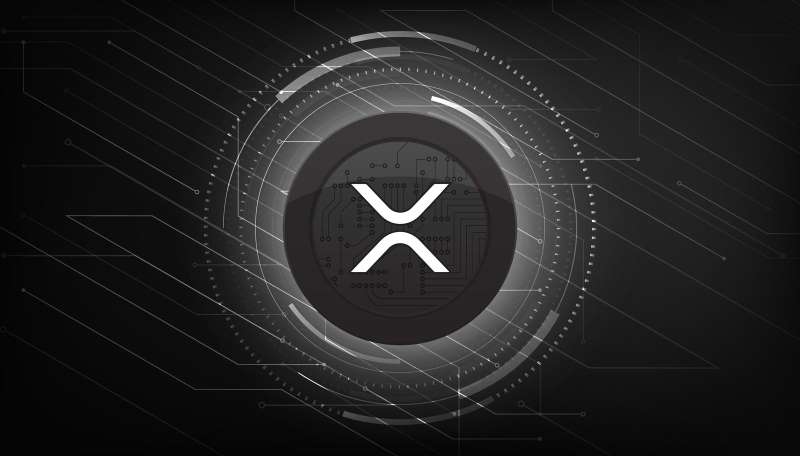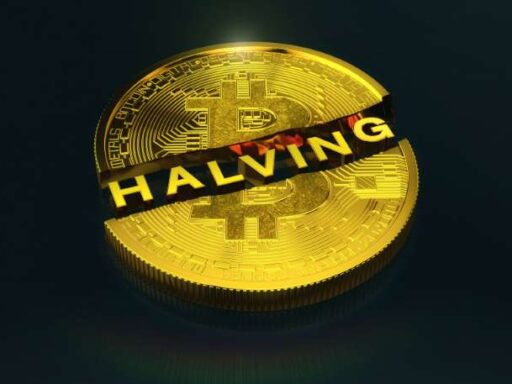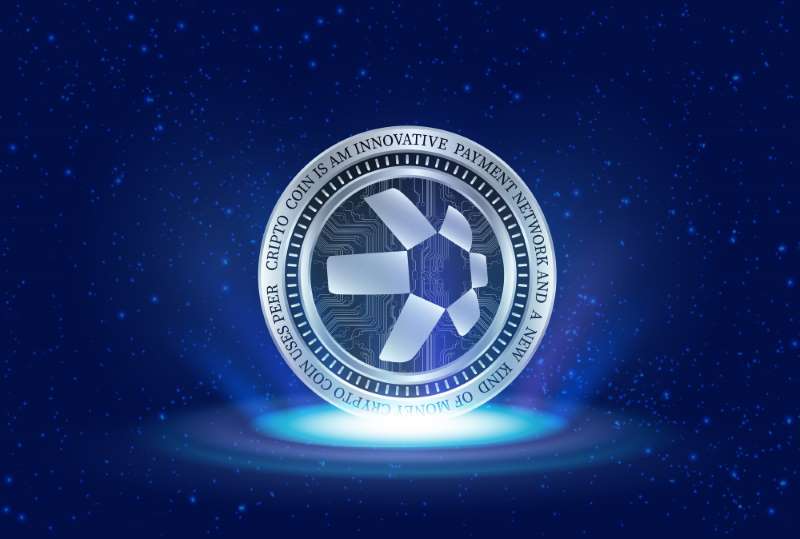

Rank: 6
Central Bank Digital Currencies (CBDCs) are becoming a focal point in the evolving landscape of digital finance, with nations around the world investigating their potential benefits and implications. Unlike traditional cryptocurrencies that operate on a decentralised network, CBDCs are issued and governed by a nation’s central bank. They promise to bring about increased transaction efficiency and security, while potentially reshaping the monetary systems as we know them. In this arena, the role of existing digital assets, particularly Ripple’s XRP, is critical to consider due to its unique functionalities that differentiate it from other cryptocurrencies.
Ripple, the company behind XRP, positions itself as both a digital payment processing system and a currency exchange. Its platform is designed to enable fast and cost-efficient cross-border transactions, which has attracted significant interest from financial institutions. The xRapid system, which utilises XRP, is especially relevant for its ability to provide liquidity in real-time during foreign exchange. As countries explore the development of their own digital currencies, the potential for Ripple’s XRP to act as a bridge asset that facilitates quick conversion between different CBDCs is a topic of increasing discussions.
Key Takeaways
- CBDCs represent a modernisation of financial infrastructure, with Ripple’s XRP offering unique cross-border transaction solutions.
- Ripple provides necessary liquidity that can aid in the seamless exchange between CBDCs and other forms of currency.
- The integration of XRP with CBDCs could streamline global trade and finance, while presenting both opportunities and regulatory challenges.
Understanding Ripple XRP
Ripple’s XRP is an integral part of the financial technology space, enabling fast and cost-effective cross-border transactions. It operates on the XRP Ledger, a blockchain technology that is open-source and decentralised.
XRP Ledger and Transactions
The XRP Ledger is a public blockchain where XRP transactions occur. Distinctive for its consensus protocol, it differs from the proof-of-work mechanism employed by Bitcoin, as it does not require mining. This makes it both energy-efficient and capable of settling transactions in a matter of seconds. Its decentralised nature allows for transparency in transactions while maintaining security.
- Transactions on the XRP Ledger are:
- Quick: Often completed in 3-5 seconds.
- Scalable: Can handle 1,500 transactions per second.
- Low Cost: Transaction fees are a fraction of a cent.
Ripple’s Role in Financial Services
Ripple, the company, leverages XRP and the XRP Ledger to facilitate global payments. Its financial services are designed to modernise legacy systems, using the speed and fluidity of blockchain technology to allow for instant settlement. Banks and financial institutions employ Ripple’s payment protocol, benefiting from reduced transaction times and costs associated with cross-border payments. Ripple’s influence continues to grow as they advocate for the adoption of blockchain technology in the financial industry.
Central Bank Digital Currencies (CBDCs)
Central Bank Digital Currencies (CBDCs) are becoming pivotal in the evolution of monetary systems, as they represent a digital form of a nation’s fiat currency.
Essence of CBDCs
CBDCs embody a sovereign currency in digital form, issued and regulated by a country’s central bank. They are designed to coexist with traditional paper cash while seeking to provide improved financial efficiency and a more secure transactional framework. Central banks aim to integrate CBDCs within existing monetary policies to maintain economic stability.
Retail vs Wholesale CBDCs
Retail CBDCs are intended for the general public’s use, functioning comparably to banknotes, offering advancements in accessibility and inclusivity in financial systems. Wholesale CBDCs, on the other hand, are restricted for use by financial institutions as a settlement asset in interbank transactions and related activities. Wholesale variants contribute to enhanced efficiency and reduced risks in high-value transactions.
Global CBDC Initiatives
Globally, CBDC initiatives vary, with numerous central banks exploring, piloting, or implementing CBDCs. Progressive developments include the prototype CBDC system built on Ripple’s XRPL, illustrating how countries may utilise existing blockchain technologies to foster their CBDC approaches. They continually assess the impact on traditional banking, fiat currency circulation, and their role in reinforcing monetary policies and national financial stability.
Ripple’s Involvement with CBDCs
Ripple continues to forge its path in the digital currency landscape, positioning itself as a key player in the growing dialogue surrounding Central Bank Digital Currencies (CBDCs). With innovative solutions tailored for central banks, Ripple aims to enable the next generation of high-performance payment systems.
Ripple CBDC Platform
The Ripple CBDC Platform is designed to provide central banks with a secure, controlled, and flexible solution for the issuance and management of digital currencies. Utilising the XRP Ledger’s underlying technology, the platform ensures high throughput and scalability, which are critical factors for the successful deployment and operation of a CBDC. Ripple emphasises interoperability with existing financial infrastructure, a feature that could potentially simplify the integration process for participating financial institutions.
CBDC Private Ledger
Ripple has introduced the CBDC Private Ledger, based on the same blockchain technology that underpins the XRP Ledger but with added privacy and control features suitable for central banks. This separate ledger is intended to meet the needs of central banks by offering transaction privacy and a permissioned system with roles and partitions, maintaining a high standard of security while facilitating high-speed transactions.
Partnerships and Projects
Ripple has been proactive in forming partnerships and participating in CBDC-related projects around the world. Their collaborative efforts extend to engaging with various central banks and financial institutions to explore the integration of Ripple’s technology into CBDC initiatives. For instance, Ripple has been linked to the development of CBDCs, contributing expertise and technological infrastructure capable of reinforcing the foundation of digital finance.
Through these dedicated platforms and partnerships, Ripple endeavours to bring the promise of faster, more efficient, and inclusive payment systems to fruition with CBDCs.
Benefits and Challenges of Integrating XRP with CBDCs
In examining the integration of XRP with central bank digital currencies (CBDCs), it is crucial to consider both the potential advantages and the significant technical and regulatory challenges. This section unpacks the intersection where XRP’s blockchain technology meets the evolving landscape of CBDCs in terms of settlement efficiency, privacy, and financial innovation.
Advantages of XRP in the CBDC Ecosystem
XRP, as a digital asset native to the Ripple protocol, offers notable advantages for the CBDC ecosystem. Its blockchain infrastructure is lauded for high throughput and low transaction costs, which can be a boon for central banks aiming to incorporate digital currencies. The potential for XRP to facilitate real-time, cross-border payments could enhance the interoperability amongst various CBDCs, making it possible for more seamless currency conversions and international transactions.
CBDCs are designed to bolster the trust and security inherent in digital currencies issued by central banks. XRP’s consensus protocol strengthens the settlement process, ensuring that transactions are not only swift but also secured through cryptographic methods. In addition, XRP’s approach can add layers to financial innovation in the CBDC space, supporting diverse use-cases beyond simple transactions, such as in smart contracts and supply chain tracking.
Technical and Regulatory Hurdles
While integrating XRP with CBDCs carries potential benefits, there are formidable technical and regulatory hurdles to navigate. Blockchain interoperability poses a substantial technical challenge; ensuring systems can work harmoniously without compromising the performance is intricate. Moreover, the privacy of transactions is another concern, especially in the light of XRP’s publicly accessible ledger, which may conflict with a central bank’s requirement for confidentiality in its digital currency transactions.
Regulatory clarity is not yet fully established for XRP, particularly after high-profile legal challenges that have raised questions about the security status of XRP. Regulators are scrutinising how XRP is distributed and utilised within the financial system, which could affect its adoption by central banks considering CBDCs. Additionally, sustained efforts in educating and aligning various international regulatory frameworks will be key to overcoming the regulatory hurdles that the integration might face.
Future Perspectives on Digital Currencies
The emergence of digital currencies is revolutionising how monetary transactions occur, with Ripple’s XRP and various Central Bank Digital Currencies (CBDCs) being of particular relevance in this digital transformation. They represent a shift in the global financial infrastructure, emphasising innovation and financial inclusion.
Innovation in Financial Transactions
In the rapidly evolving financial ecosystem, blockchain technology is a critical driver of innovation. It underpins digital currencies, such as Ripple’s XRP, enabling near-instantaneous transactions across borders. This reduces the cost and time associated with traditional banking, potentially providing financial access to the previously unbanked. Experts suggest that with its minimal transaction fees—typically set to 0.00001 XRP—and its scalability, Ripple could play a significant role in the future of money.
Ripple’s Vision for the Digital Economy
Ripple envisages a digital economy where financial inclusion is paramount. This vision aligns with the concept of CBDCs, which may help integrate the unbanked into the global financial infrastructure. Ripple’s XRP, as a part of this narrative, is not just a cryptocurrency but a tool to enhance the sustainability and efficiency of the financial ecosystem. With considerations surrounding CBDCs becoming more prevalent, Ripple’s collaborative and open approach could forge a path towards a more accessible and inclusive financial future.
Frequently Asked Questions
This section directly addresses common inquiries about the cross-section of Ripple’s XRP and the burgeoning area of central bank digital currencies (CBDCs).
Can XRP be utilised within central bank digital currencies?
XRP has the potential to be integrated into CBDC systems, offering a bridge currency for cross-border transactions, thanks to its quick settlement times and low transaction costs.
Which financial institutions have implemented XRP in their operations?
Several financial institutions globally have adopted XRP to facilitate faster and more cost-effective cross-border money transfers.
In what ways is Ripple participating in the development of CBDCs?
Ripple is actively engaging in the CBDC space by providing its blockchain technology for pilot projects and researching the implications of introducing digital currencies in various economies.
Have any partnerships been formed between Ripple and central banks?
Ripple has indeed formed partnerships with some central banks to explore the use of XRP in enhancing the efficiency of their payments systems.
What role does the Ripple CBDC whitepaper suggest for XRP’s future?
Ripple’s CBDC whitepaper proposes that XRP could serve as a neutral asset to facilitate liquidity management and ease the interoperability challenges between different CBDCs.
Are there any countries that have adopted XRP for their CBDC initiatives?
While specific country adoptions have not been disclosed, Ripple’s technology and XRP are being evaluated by multiple countries as part of their CBDC initiatives to establish a more efficient payment and settlement framework.









